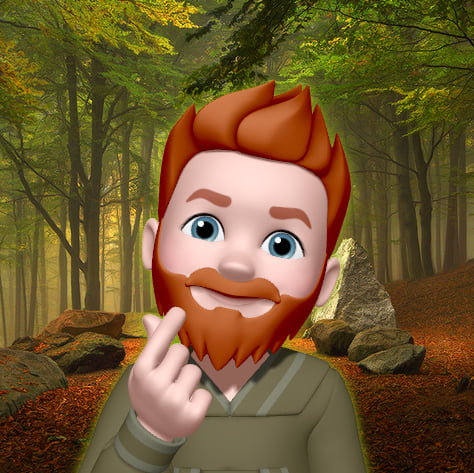

Mandate a minimum of five parties.
Get money out of politics.
No campaigning and/or fundraising until 2 months before the election.
Federal elections are national holidays.
Just your average urban druid interested in technology and quantum field theory.


Mandate a minimum of five parties.
Get money out of politics.
No campaigning and/or fundraising until 2 months before the election.
Federal elections are national holidays.


That’s okay Dad! I’m sure that one from 2007 is gonna kill….


Just a few days after more than 700 million new users flooded RedNote…
A Beijing-based independent industry analyst, Liu Xingliang, told Reuters that RedNote was “caught unprepared” by the influx of users.


What does that mean? “Defer” “knowledge” “position” & “power” aren’t connecting in my head…
“Awesome Human” also works!
Doesn’t matter how the stranger IDs, they’re human, and who doesn’t like to be considered awesome.


The Turd Reich is upon us.


On the plus side you no longer need heating.


“Breaches can result in fines of up to 6% of their global annual sales.“
Well…since they don’t sell anything, and where exactly they’re getting their money from is an outstanding question, I’m sure once they get to 45 million users in the block they’ll be happy to pay 6% of zero.
It’s one of the best features of bsky!
Lists, feeds, starter packs, and moderation tools that work, have all led to a very vibrant and engaging social media experience!
The user base isn’t afraid of quickly dealing with antisocial behavior.
You can tell which way your media outlets position themselves by how they report on this aspect of bsky. Egalitarians will cast it in a positive light, while Elitists will cast it in a negative light.
This!
That…became an all too common upvoted reply. At one point Reddit was good, but for years it’s been sliding into enshitification.
I take it you tried out bsky and had a bad experience…


Damn, that’s interesting!


Wow, you signed up yesterday and determined, “an algorithm that entices you into a parasocial relationship with the synthetic community” all on your own?
It’s not any of that…
But If what it truly is, isn’t for you, that’s fine too.


They added 1 million new users yesterday alone, so it’s happening! And so are the growing pains.
Jay, their CEO, had a Twitch stream yesterday and she said they’re a 20 person team!
It truly is like old Twitter.


Citation needed.


Assuming you’re talking about a laptop…
Pro. 100% It has a fan to keep cool during your work sessions, and with that much going on you’ll need that fan.
I assume also that you need to be portable for some reason. If not check out the new Mac mini.


FTFA: “Launched federation for self-hosters and developers. Now there are over 1,000 other personal data servers (PDS) outside of Bluesky.”


One thing I am always aware of are apps that want permission to access Bluetooth and/or Wi-Fi and/or Networks.
Even though Bluetooth is very short ranged it can still be used to tie you into a location within a database based on other database records that are more detailed.
Yeah, I love playing you “My Great Dog-sitting Simulator” (not a real app) but you do not need access to my BT. The OS handles sending your audio to my headphones!
Last heard (a few months ago) the cost is in storage. The protocol isn’t too complicated now, but it generates a shit ton of data, and IIRC you need a minimum of 3 copies.